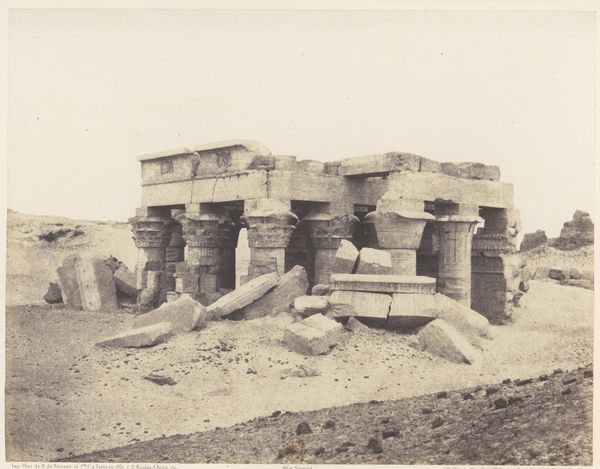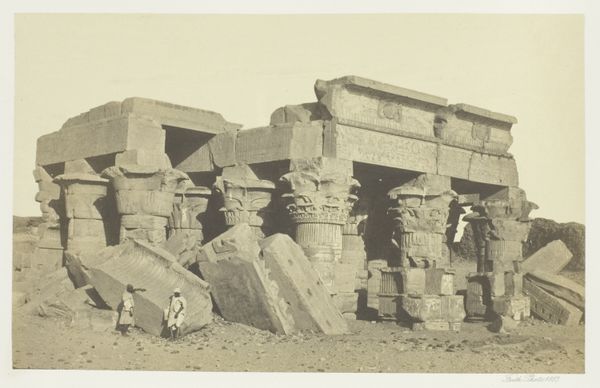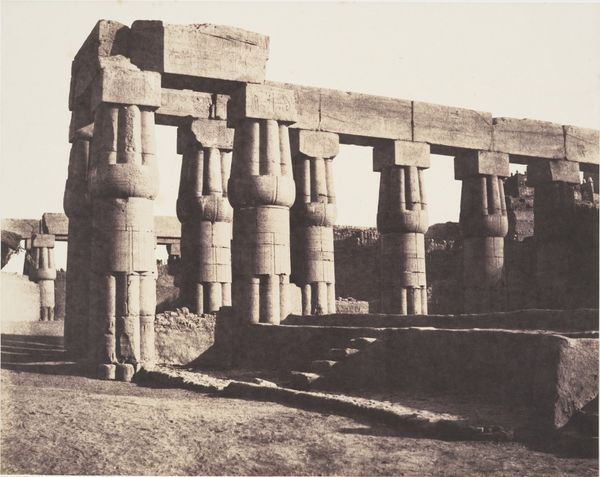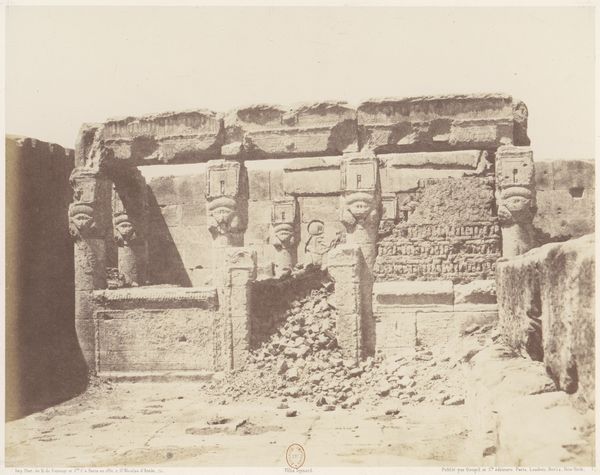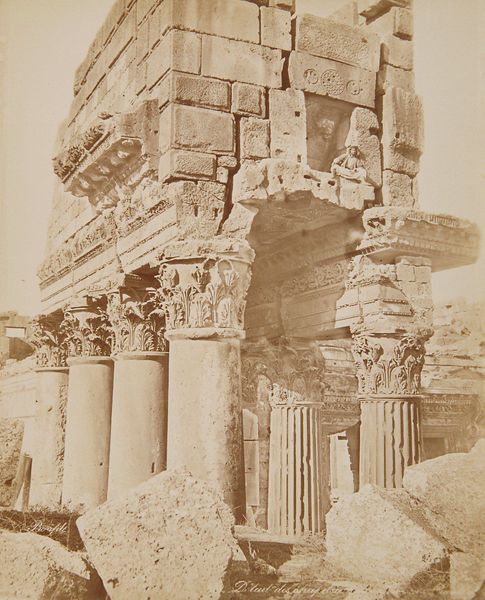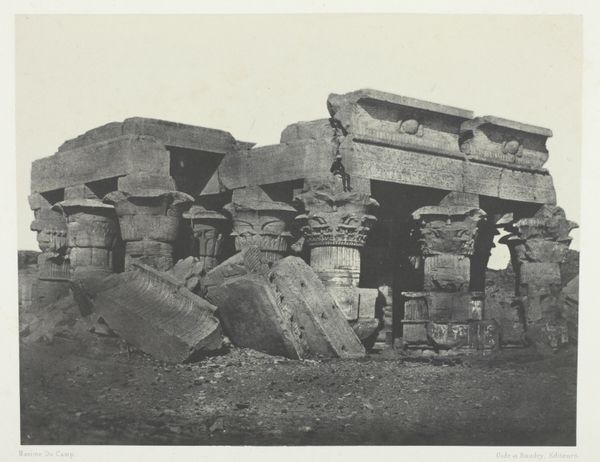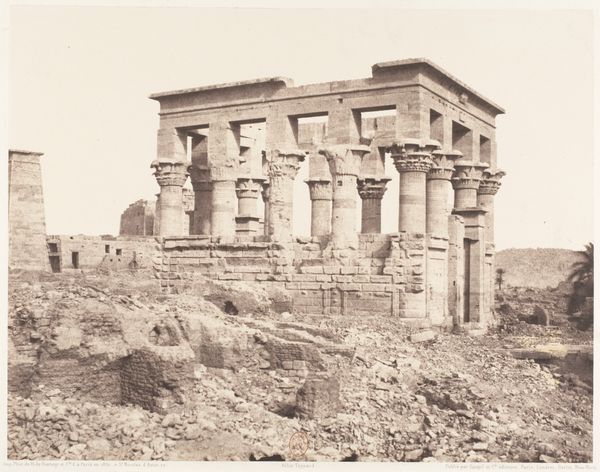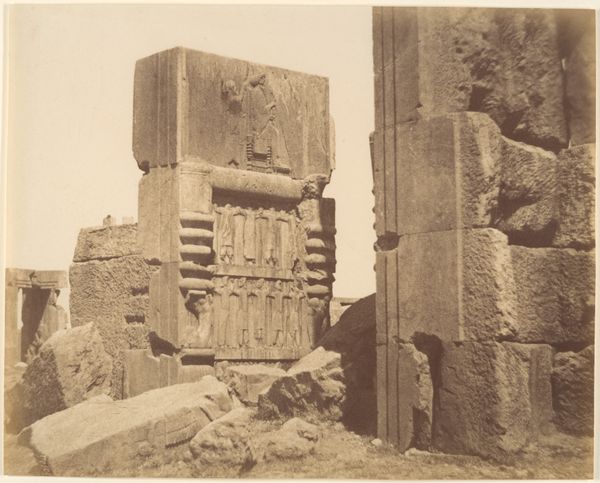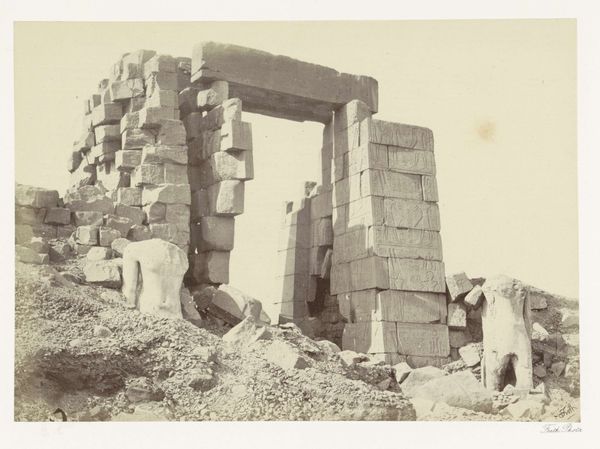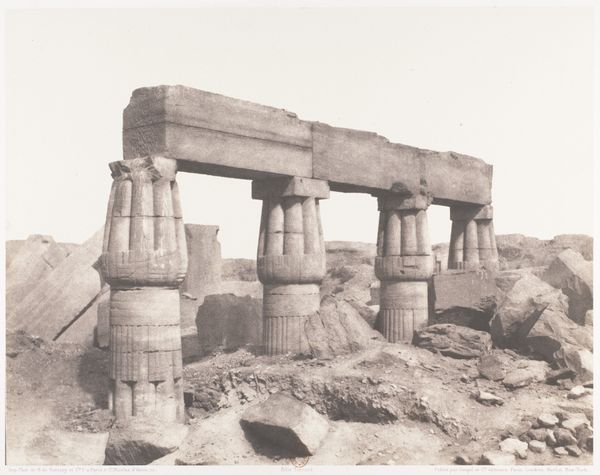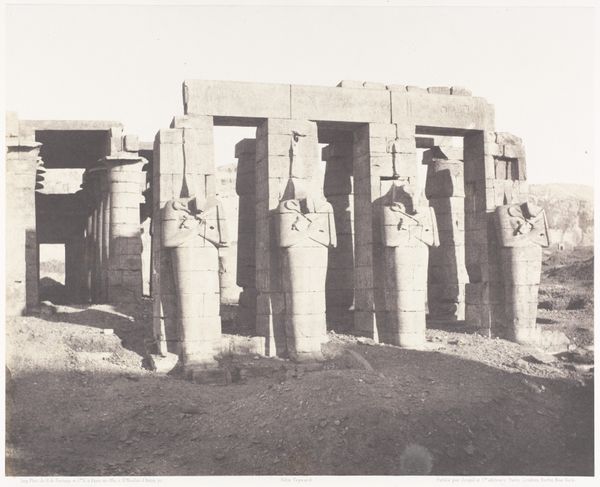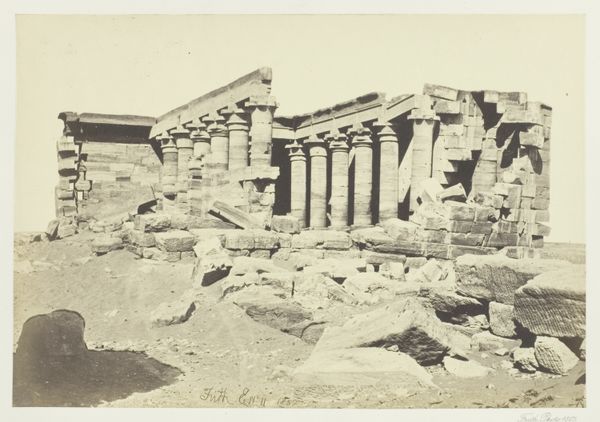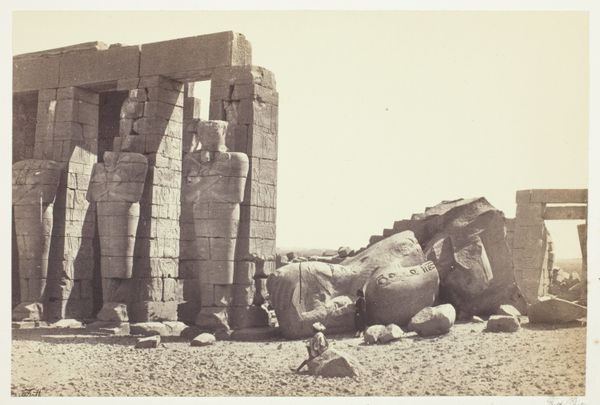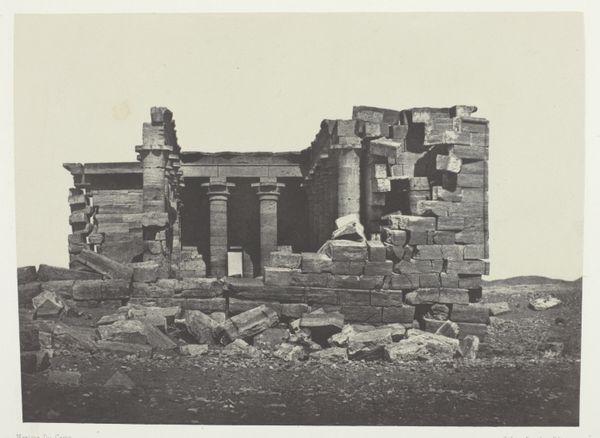
albumen-print, print, photography, albumen-print, architecture
#
albumen-print
#
architectural landscape
# print
#
landscape
#
ancient-egyptian-art
#
historic architecture
#
photography
#
geometric
#
ancient-mediterranean
#
albumen-print
#
architecture
#
historical building
Dimensions: 8 5/16 x 10 3/8 in. (21.11 x 26.35 cm) (image)11 x 14 in. (27.94 x 35.56 cm) (mount)
Copyright: Public Domain
Editor: This photograph, entitled "Untitled," by Antonio Beato, is an albumen print dating back to the 19th century. I’m immediately struck by the stark contrast between the surviving architectural elements and the ruins scattered around. What sociopolitical themes might we interpret from such an image? Curator: This image invites us to consider the complicated interplay between power, colonialism, and visual representation. Beato, as a European photographer in Egypt, occupies a specific position. Whose perspective are we seeing? Editor: Are you suggesting that the photograph perpetuates a colonial gaze? Curator: Precisely. The ruins, while visually compelling, become symbols of a fallen empire, ripe for Western interpretation and, arguably, appropriation. This was during a time of intense European interest in, and domination of, the region. How does the photograph perhaps serve to legitimize that domination, framing Egypt as a site of the past rather than a dynamic, contemporary society? Consider also, for whom was Beato producing these images, and what narratives were they consuming? Editor: So, the aesthetic beauty of the ruin could mask a more problematic power dynamic? The Western gaze finding beauty in the degradation of another culture's past? Curator: Exactly. And that “beauty” was often packaged and sold to European audiences eager for exotic imagery, reinforcing existing power structures and fueling the orientalist fantasy. Think about how images like this contributed to a particular understanding of the "East" as ancient, mysterious, and ultimately, subservient. What might a contemporary Egyptian photographer have captured, if given the same opportunity? Editor: That's fascinating; it really makes you consider the multiple layers of interpretation involved when viewing historical images. Curator: It highlights how photography can be both a document and a tool of ideological positioning. Recognizing this is the first step in decolonizing our own gaze.
Comments
No comments
Be the first to comment and join the conversation on the ultimate creative platform.
